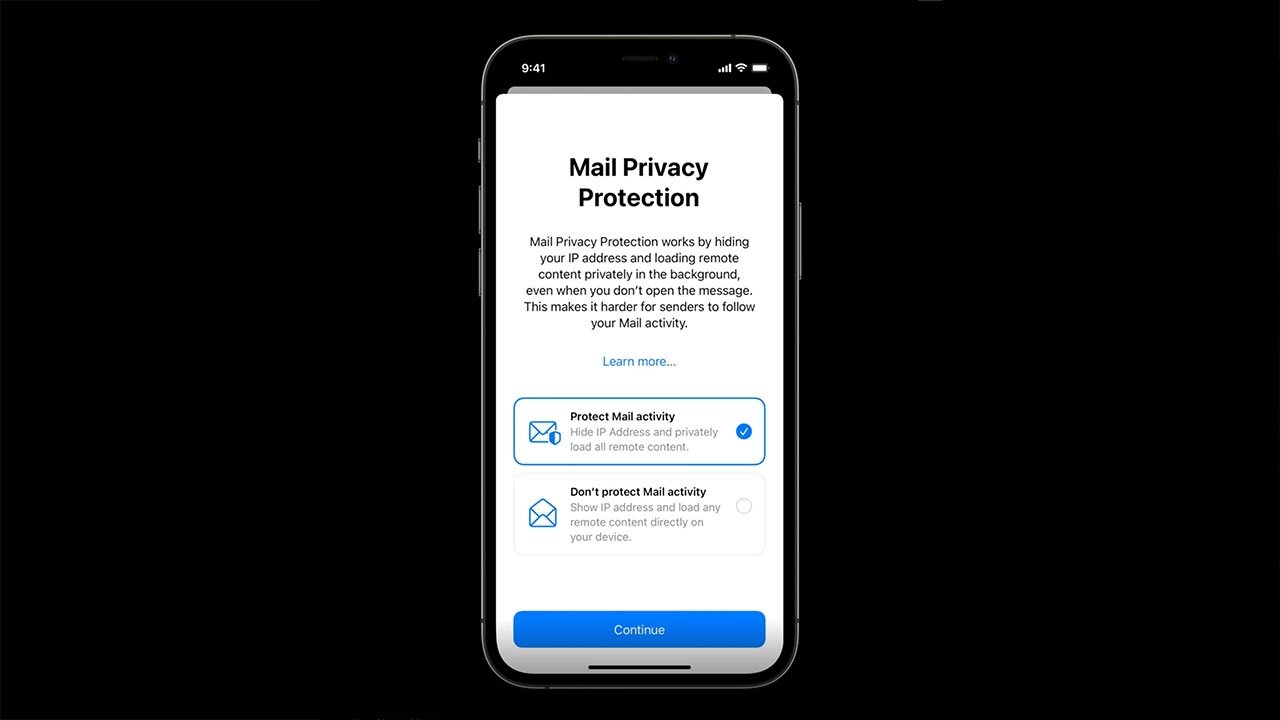Category
Tags
by Morgan Maguire, Senior Email Marketing Manager at The Stable
On September 20, 2021, Apple’s long-awaited iOS 15 software update was released for iPhone and iPad users. Included in Apple’s iOS 15 update is a series of privacy updates, featuring Mail Privacy Protection as the most prominent of these updates. When a user opens the Apple Mail App after updating to iOS 15, they are first prompted by a Mail Privacy Protection update with a choice to “Protect Mail activity” or “Don’t protect Mail activity.” When enabled by the user, Mail Privacy Protection masks IP addresses and prevents senders from tracking email open behavior. These privacy protections will result in inaccurate open rates and less visibility into subscriber email activity, requiring marketers to adopt new methods of measuring email performance.
As reported by Litmus in August 2021, Apple is ranked #1 in email market share, with a combined 49.8% share of email opens share across Apple iPhone, Apple Mail (Desktop), and Apple iPad devices.
Although Apple holds such a large share of the email client market, any business that uses email marketing to communicate with their customers will be impacted by iOS’s Mail Privacy Protection. In this post we’ll explain how iOS 15’s Mail Privacy Protection will impact email marketing and what The Stable is doing to adapt to these changes.
 Photo source: Apple Insider
Photo source: Apple Insider
Key Impacts on Email Marketing
- Open Rates
- Email Deliverability & List Health
- Segmentation
Impact #1: Open Rates
According to a press release published by Apple in June 2021, “Mail Privacy Protection stops senders from using invisible pixels to collect information about the user. The new feature helps users prevent senders from knowing when they open an email, and masks their IP address so it can’t be linked to other online activity or used to determine their location.”
Email Service Providers (ESPs) have determined that when Mail Privacy Protection is enabled, Apple Mail will mark all emails received as “open,” regardless of whether or not the user actually opened the email. ESPs are not able to determine whether individual email opens are “real” (users actually opening the email) or “fake” (Apple Mail’s automatic open). This inability to determine real opens from fake opens is why open rate data may now be unreliable. As more Apple Mail users opt-in to iOS 15’s Mail Privacy Protection, email open rates are likely to be inaccurately heightened.
Although iOS 15’s biggest impact on email marketing comes from inaccurate email open data, losing visibility into subscriber IP addresses also poses an issue for email marketers, potentially making IP-based location segmentation unreliable or unavailable for subscribers with Mail Privacy Protection enabled.
How The Stable is Optimizing Email Open Rates
Open rates have long been considered a vanity metric to some marketers, and with the release of Apple’s Mail Privacy Protection, they are becoming a less reliable measure of email performance. Marketers should continue to move away from relying on open rates and instead focus on click rates as the primary engagement metric when measuring email performance and A/B testing email content. Email opens and clicks are most valuable when the subscribers that are engaging with your emails are also purchasing from your brand. The Stable will continue to focus on click rates as a measure of email engagement alongside bottom funnel metrics such as conversion rate, revenue per recipient, etc.
Impact #2: Email Deliverability + List Health
Since open rates are considered a key component of measuring email deliverability, receiving inaccurate open data creates a challenge for email marketers in regards to overall email deliverability. Klaviyo defines email deliverability as “when an email successfully reaches the inbox (including tabbed inboxes, such as Google’s Promotions tab). An email is unsuccessfully delivered when it ends up in the spam folder or is blocked from reaching the inbox entirely.”
When subscribers open your emails, this indicates to inbox providers that they are engaged with your brand. Receiving consistently good open rates trains inbox providers (Gmail, Yahoo, AOL, etc.) to recognize you as a reputable sender, and deliver your email to the recipient’s inbox instead of the spam folder. However, the opposite is also true—when your emails receive consistently low open rates it indicates that your subscribers are unengaged. Continuing to send to unengaged subscribers will train inbox providers to recognize you as a “bad” sender, which can threaten future email deliverability if providers determine your email is spam.
Email automations (flows) that are triggered by opens or that use open data to filter contacts in any way are likely to be affected by Mail Privacy Protection. This would include retention and re-engagement automations, such as a sunset flow. Sunset flows are used to clean email lists of unengaged subscribers by giving them one last chance to re-engage with your brand’s emails before being suppressed from all future marketing emails. Suppressing those subscribers that don’t with sunset flow emails prevents you from sending to unengaged contacts and putting email deliverability at risk.
However, due to iOS 15’s latest privacy updates, some subscribers with Mail Privacy Protection enabled may go through a sunset flow and remain completely unengaged with a brand’s emails, but not end up becoming suppressed due to Mail Privacy Protection’s automatic opens.
How The Stable is Handling Email Deliverability + List Health
As open rates will no longer be a reliable metric for measuring email marketing deliverability, we will place a stronger emphasis on other key deliverability metrics including click rates, bounce rates, unsubscribe rates, and spam complaint rates. Any retention or re-engagement flows that trigger on email opens should instead use clicks as the flow trigger. It’s likely that brands will send emails to unengaged subscribers following the release of Apple’s Mail Privacy Protection, even when following recommendations from your agency or ESPs. If this happens, one way to prevent spam complaints from unengaged contacts is to provide clear opt-out language in your emails and include a link for subscribers to manage their email preferences.
Impact #3: Segmentation
Any segments that use email opens as a segment criteria, including engaged and unengaged segments, will be impacted by Apple’s Mail Privacy Protection. Since the email open data reported to ESPs by Apple Mail will be inaccurate due to Mail Privacy Protection’s automatic email opens, engagement segments using open data will also be inaccurate. As more Apple Mail users enable Mail Privacy Protection, unengaged segments may shrink in size as some of these subscribers will be incorrectly moved into engaged segments.
How The Stable is Optimizing Segmentation
Since the release of iOS 15, we have been closely monitoring all engagement segments that use email opens in the segment definition. Each account has a unique audience makeup and while some brands have already seen highly inflated open rates and engaged segments, others have not been impacted as much. For brands where it’s clear that Mail Privacy Protection is creating inaccurate engagement segments, we have removed email opens from segment definitions. Regardless of whether or not an account is impacted by Mail Privacy Protection, we recommend expanding engagement segment criteria to include additional indicators of engagement such as clicks, site visits, product views, purchases, etc.
The Stable Can Assist With Your Email Marketing Strategy
Until ESPs can develop product updates to help brands work around the limitations of iOS 15’s Mail Privacy Protection, brands should closely monitor email marketing performance as more Apple Mail users enable Mail Privacy Protection. Our email marketing team can help you adapt to these changes to optimize your email marketing performance, deliverability, and segmentation. Get in contact with our experience team to learn more about The Stable’s services.




